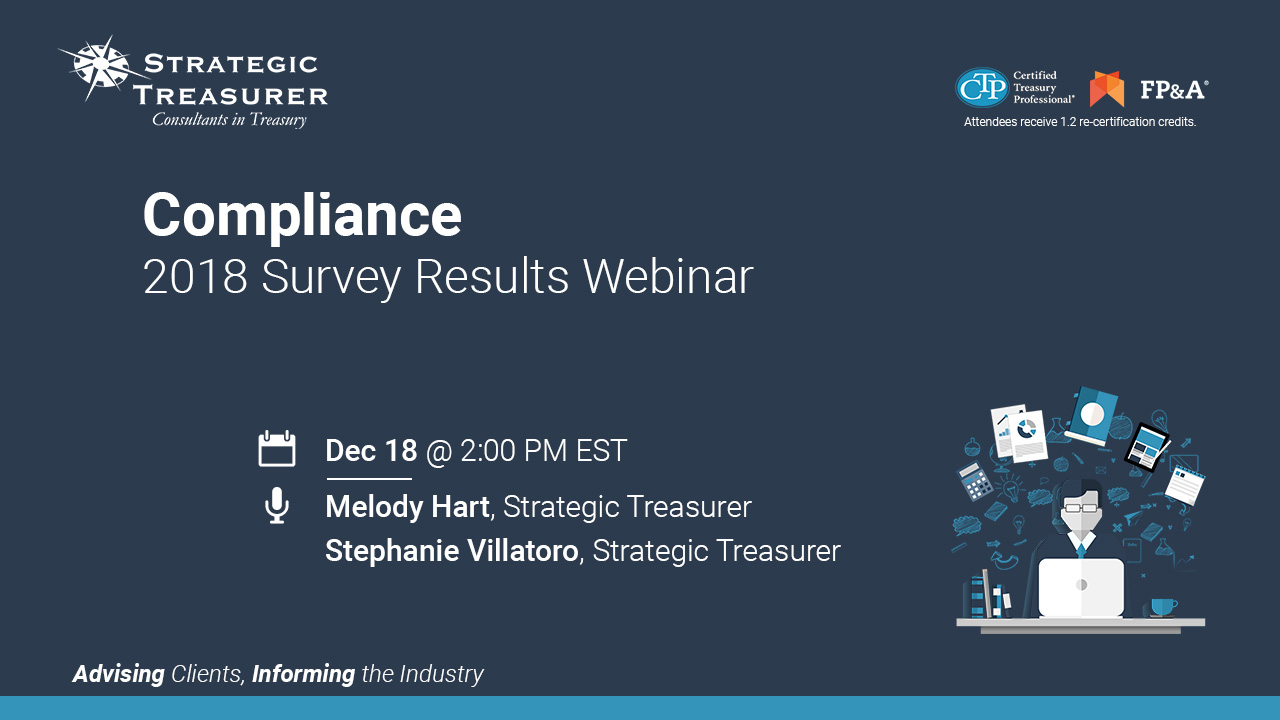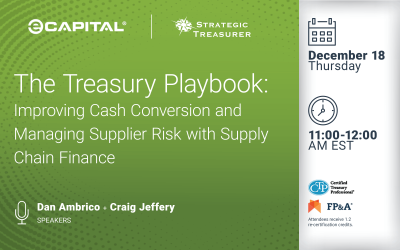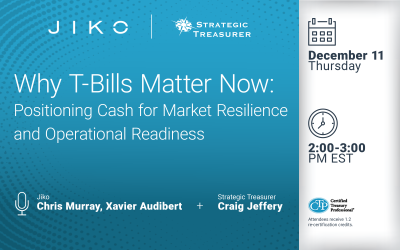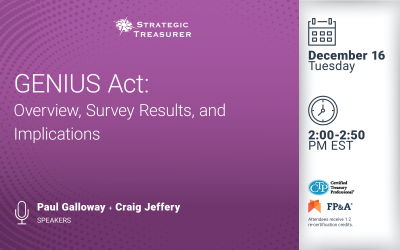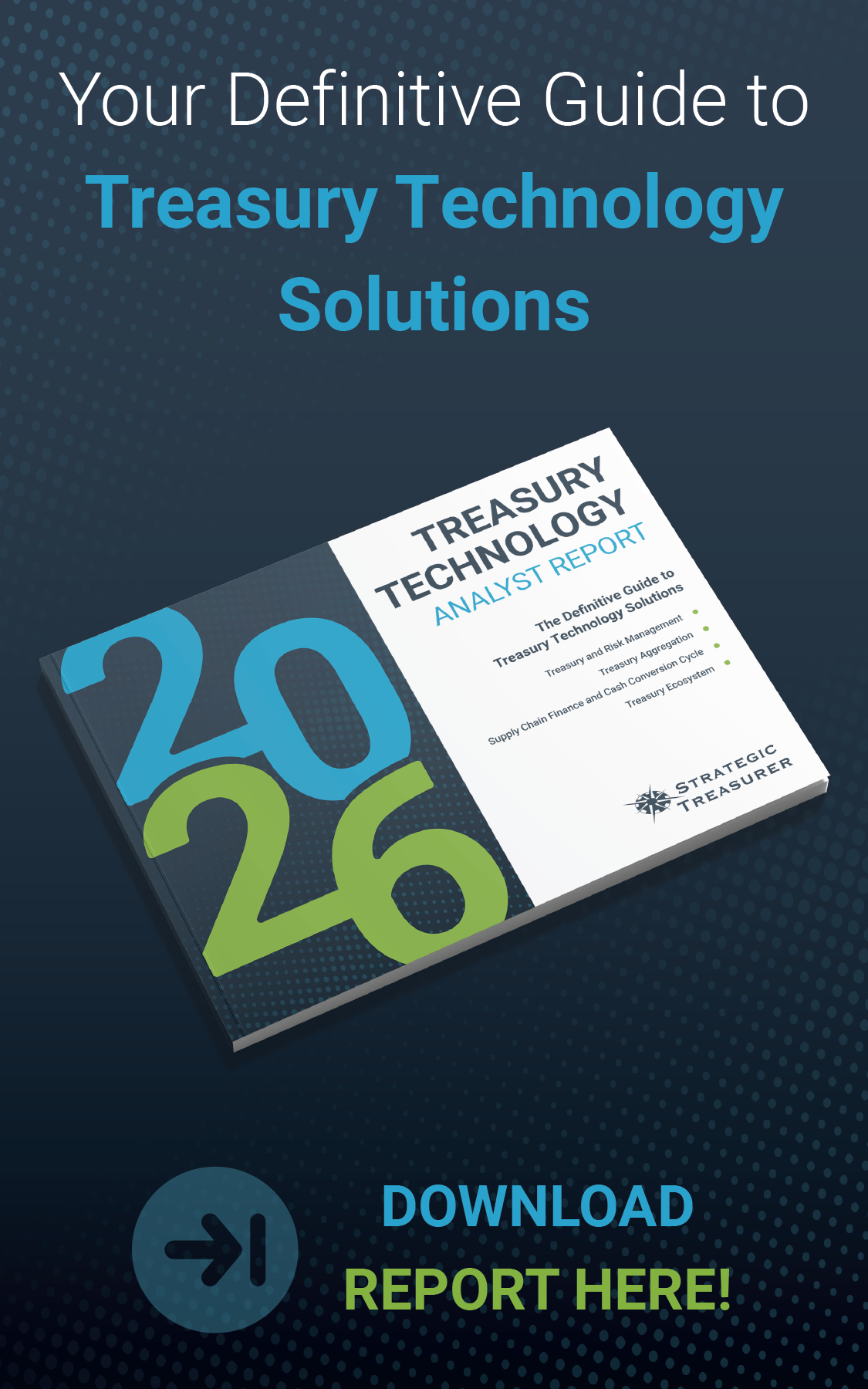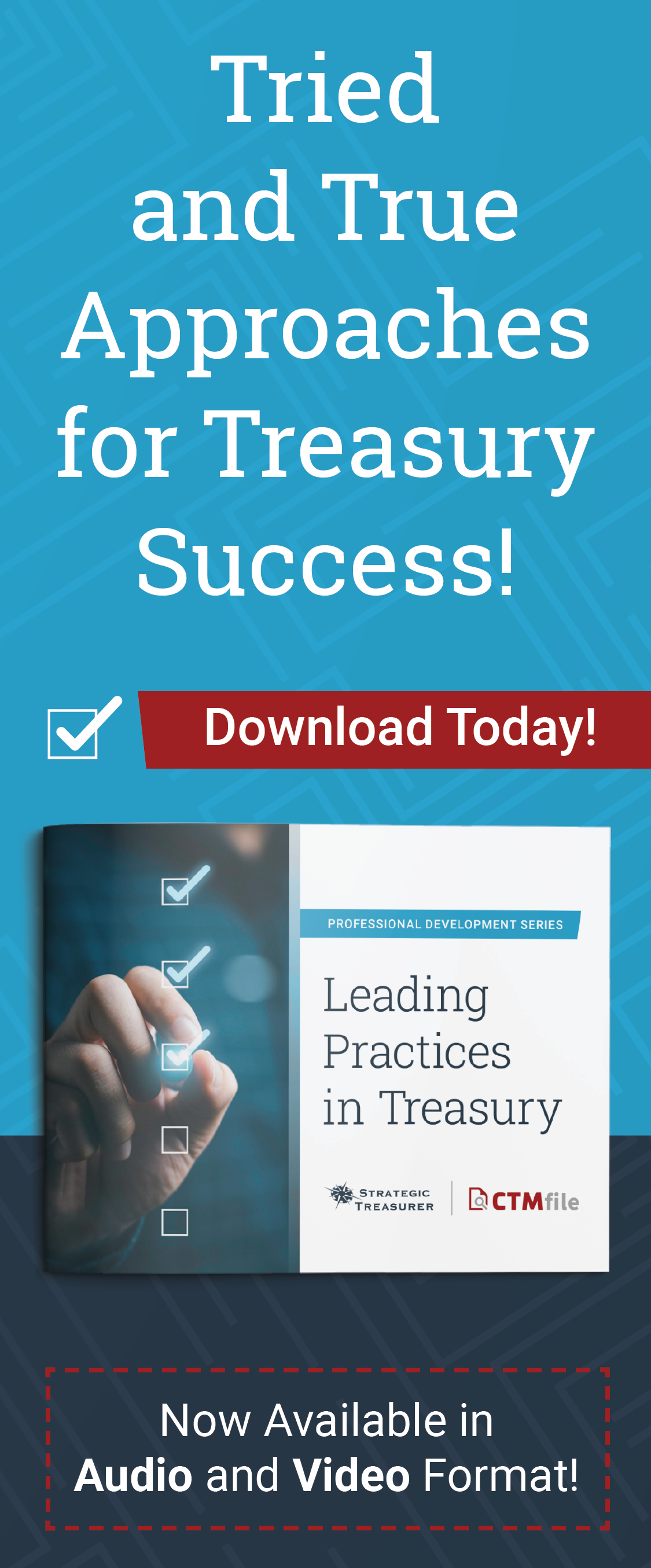This webinar covers some of the more salient data points obtained through the survey, including which areas of regulation treasury struggles with the most and the specific aspects of the environment that practitioners are most concerned about.
2018 Compliance Survey Results
Date: Tuesday, December 18, 2018
Time: 2:00PM – 3:00PM EST
Where: This is an online event.
For nearly five years now, Strategic Treasurer has been conducting our Compliance & Bank Account Management Survey to identify the top regulatory challenges impacting treasury and evaluate the unique approaches used for overcoming compliance-related obstacles. In 2018, the overall compliance environment has continued to pose a major concern for practitioners, with the majority seeing the current landscape as more restrictive than historical norms and over half expecting regulations to continue increasing in size and scope over the next few years.
This webinar cover some of the more salient data points obtained through the survey, including which areas of regulation treasury struggles with the most and the specific aspects of the environment that practitioners are most concerned about. Areas of analysis will include sanctions screening and KYC requirements, FBAR, the use and traction of eBAM solutions, and the current strategies, practices, and plans that practitioners are leveraging to manage their compliance-related operations now and into the future.
1.2 CTP and FP&A re-certification credits will be given for attendance to this live webinar.
[wpforms id=”29098” title=”false” description=”false”]
If you encounter any issues with registration or during the webinar, please contact our team. It can take a few minutes for the confirmation email to come through.
You may also be interested in:
Webinar: The Treasury Playbook: Improving Cash Conversion and Managing Supplier Risk with Supply Chain Finance | December 18
Treasury teams are entering 2026 with increasing pressure on liquidity, credit availability, and supplier stability. In this fireside chat with eCapital, we will explore practical steps treasurers can take to accelerate cash conversion, strengthen supplier relationships, and maintain control in a shifting trade environment. The discussion will examine how tariffs and global trade policies are influencing working capital, and how a well-structured supply chain finance (SCF) program can enhance visibility, extend terms responsibly, and mitigate counterparty risk. We will also highlight how SCF and export-import finance (EXIM) can work together to support exporters and reduce trade exposure.
Webinar: Why T-Bills Matter Now: Positioning Cash for Market Resilience and Operational Readiness | December 11
Market disruptions, from the 2008 financial crisis to the regional bank failures of 2023, reveal how quickly liquidity risk can threaten access to cash for treasury teams overexposed to leverage when markets tighten. What are the tools and instruments available to treasury teams that mitigate these liquidity and counterparty risks?
This session will provide a practical briefing on how treasury teams can strengthen their 2026 cash strategies and will explore the role of direct ownership of U.S. Treasury bills. Learn about different vehicles for access, common value leaks that erode returns, and how technology and automation can simplify access, settlement, and liquidity oversight.
Webinar: GENIUS Act: Overview, Survey Results, and Implications | December 16
Join us for an in-depth webinar examining the implications of the GENIUS Act for the treasury and finance community. This session will provide a comprehensive overview of the legislation, exploring its potential effects on innovation, payments modernization, data governance, and operational efficiency. Craig Jeffery and Paul Galloway will discuss key considerations for organizations as they assess readiness and compliance, exploring how the act could shape industry practices in the years ahead. The discussion will also incorporate insights from our recent GENIUS Act Survey, providing a data-driven look at current levels of awareness, anticipated challenges, and expected adoption rates.

